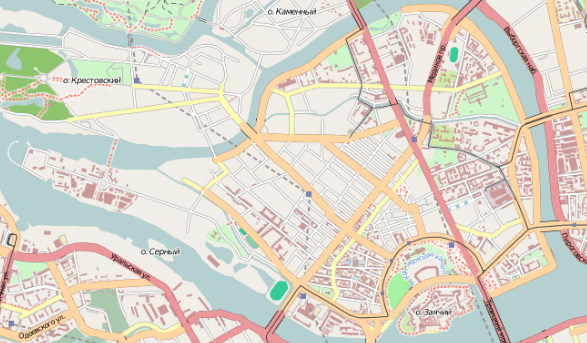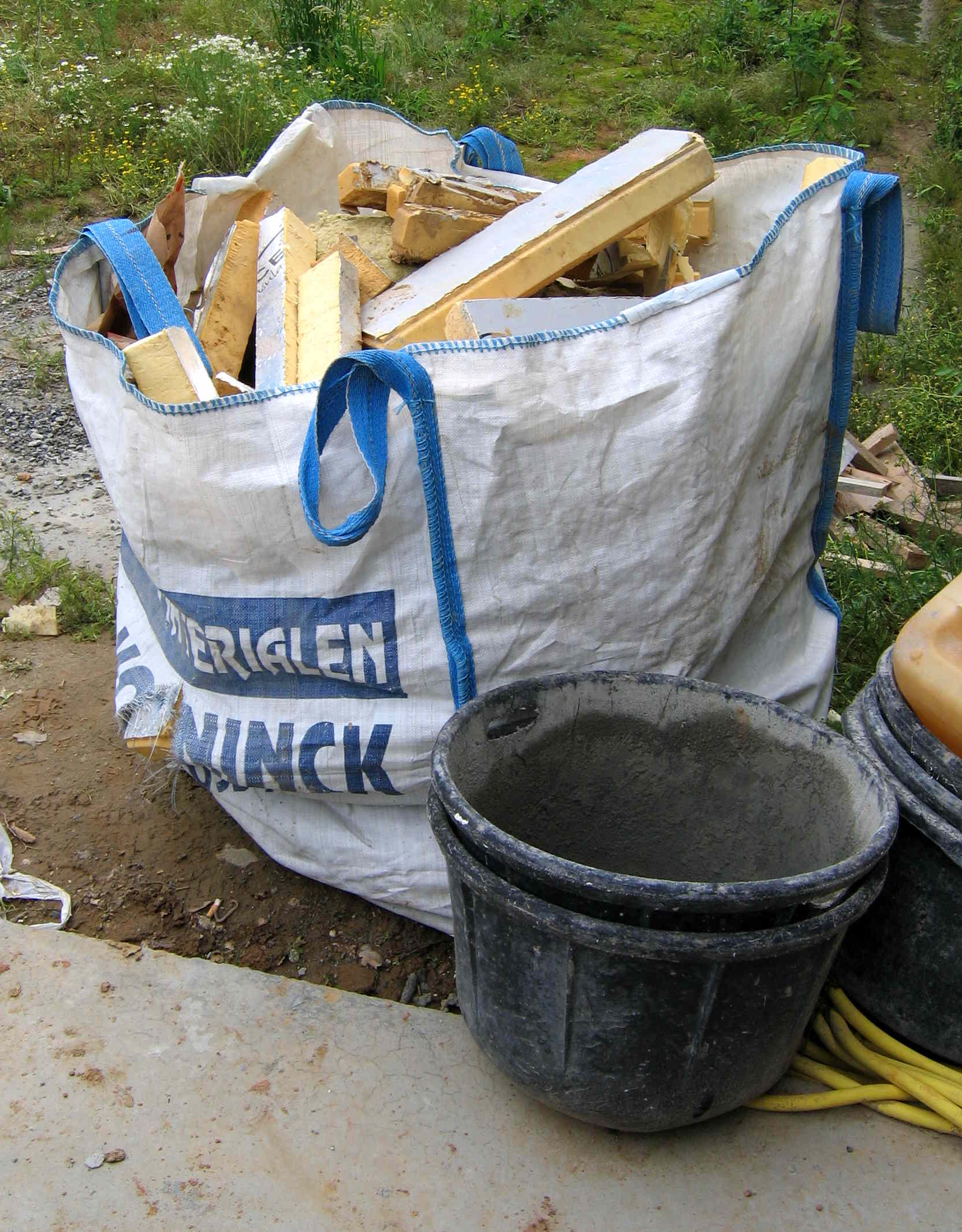|
Zhdanovka
The Zhdanovka (russian: Ждановка) is a short river in the Neva river delta in Saint Petersburg, Russia. It separates Petrogradsky Island from Petrovsky Island. History In the 17th century, the river did not have a specific name; however, it was sometimes referred to the St. Nicholas river (named after the chapel of the nearby Church of the Assumption). The place was also called "''Mokrushi''" (russian: Мокруши) because the area is surrounded by wetlands. In the 19th century, construction began on the deserted island Petrovsky. The Zhdanov brothers, Ivan and Nicholas, where the first to be granted land on the island. The Zhdanovs lined the river banks of the Malaya Neva to the current Little Petrovsky Bridge. Here, the brothers built a chemical plant, chemical-pharmaceutical plant, which drew up the birch tar and wood vinegar. The Brother's development of the area led their name being used refer to the river and the street along it. On the left bank of the river, th ... [...More Info...] [...Related Items...] OR: [Wikipedia] [Google] [Baidu] |
Petrovsky Island
Petrovsky Island (russian: Петро́вский о́стров) is an island in Saint Petersburg, St. Petersburg, Russia, bordered by the Malaya Neva River, Malaya Neva, Malaya Nevka River, Malaya Nevka, and Zhdanovka, Zhdanovka Rivers (in the delta of the Neva River). History The island was called Stolbovy or Pattisaari in the early 18th century. It belonged to Tsar Peter the Great in 1710 (hence the name) with two amusement houses built for him. There were warehouses for foodstuff and other goods in the island in the 18th century. In 1768, a wooden palace was erected for Catherine II, Catherine the Great and a park, Petrovsky Park set up around it in the southeast of the island, the palace burnt down in 1912 though. The island was built up with industrial enterprises from the second half of the 19th century such as Novaya Bavaria Brewery, rope works, and curtain and lace manufacturing. Lenin Stadium (today, Petrovsky Stadium) was erected in the southeastern extremity ... [...More Info...] [...Related Items...] OR: [Wikipedia] [Google] [Baidu] |
Neva
The Neva (russian: Нева́, ) is a river in northwestern Russia flowing from Lake Ladoga through the western part of Leningrad Oblast (historical region of Ingria) to the Neva Bay of the Gulf of Finland. Despite its modest length of , it is the fourth-largest river in Europe in terms of average discharge (after the Volga, the Danube and the Rhine). The Neva is the only river flowing from Lake Ladoga. It flows through the city of Saint Petersburg, the three smaller towns of Shlisselburg, Kirovsk and Otradnoye, and dozens of settlements. It is navigable throughout and is part of the Volga–Baltic Waterway and White Sea–Baltic Canal. It is the site of many major historical events, including the Battle of the Neva in 1240 which gave Alexander Nevsky his name, the founding of Saint Petersburg in 1703, and the Siege of Leningrad by the German army during World War II. The river played a vital role in trade between Byzantium and Scandinavia. Etymology The earliest peop ... [...More Info...] [...Related Items...] OR: [Wikipedia] [Google] [Baidu] |
Petrogradsky Island
Petrogradsky Island or Petrograd Island (Russian: Петроградский остров) is the third largest island in the Neva River delta in Saint Petersburg, Russia. Along with Zayachy Island, Aptekarsky Island, and Petrovsky Island, it constitutes the Petrogradskaya Side (Russian: Петроградская сторона). It is the administrative center of the Petrogradsky District and hosts a number of universities and research centers, as well as cultural, historical, and recreational facilities. Geography Petrogradsky Island lies between the Neva River and its Bolshaya Nevka branch. It is separated from Aptekarsky Island on the north by the Karpovka River, from Krestovsky Island on the west by the Malaya Nevka, from Petrovsky Island on the south by the Zhdanovka River, and from Zayachy Island on the southeast by the Kronverksky Strait. It is linked to the central district by the Troitsky Bridge, to Vasilievsky Island by the Birzhevoy ''(Exchange)'' Bridge and Tuchk ... [...More Info...] [...Related Items...] OR: [Wikipedia] [Google] [Baidu] |
Malaya Neva
The Little Neva or Malaya Neva (russian: Ма́лая Нева́) is the second largest distributary of the river Neva. The Neva splits into Great Neva (the southern armlet) and Little Neva (the northern armlet) near the Spit of Vasilievsky Island (easternmost tip of the island), in the historic centre of the city of Saint Petersburg. The Little Neva is long; the width is from , and the depth is . It has its own armlets: Smolenka and Zhdanovka. There are three bridges across Little Neva: Exchange Bridge, Tuchkov Bridge and Betancourt Bridge. See also * List of bridges in Saint Petersburg There are more than 342 bridges in the city limits of Saint Petersburg, Russia. This is a partial list of the most famous ones. Peter the Great was designing the city as another Amsterdam and Venice, with canals instead of streets and citizens sk ... References Rivers of Saint Petersburg Distributaries of the Neva {{Russia-river-stub ... [...More Info...] [...Related Items...] OR: [Wikipedia] [Google] [Baidu] |
Vulcan Inc
Vulcan LLC is a privately held company founded by the Microsoft co-founder Paul Allen and his sister Jody Allen in 1986 to establish and oversee the family's diverse business activities and philanthropic endeavors. It includes Vulcan Real Estate, the Paul G. Allen Estate and Trust, and advises the Paul G. Allen Family Foundation. Vulcan LLC is headquartered in Seattle, Washington.Company Overview of Vulcan Inc. , ''Bloomberg News, Bloomberg'' History Vulcan Northwest was formed in Bellevue, Washington in 1986 to manage the business affairs, investments, and philanthropic affairs of Paul Allen. The company initially had a Pacific Northwest focus. The company's headquarters moved from Bellevue to Seattle in 1998. In 2001, ...[...More Info...] [...Related Items...] OR: [Wikipedia] [Google] [Baidu] |
Cadet (dinghy)
The Cadet is a class of sailing dinghy designed to be sailed by two children up to the age of 17. It is a one-design class, originally designed by Jack Holt (dinghy designer), Jack Holt in 1947. Cadets are sailed worldwide in more than 40 countries. History In 1947, ''Yachting World'' organised a design competition for a beginners' sailing dinghy that the current Cadet-design won. Design The boat is crewed by two people and sails with a bermuda rigged mainsail, jib and spinnaker. The Cadet is the only recognised two persons youth-boat by World Sailing (formerly ISAF) as an International Competitive Youth Sailing Class since 1958. Over 10,000 Cadets have been built worldwide by registered licensed builders on four continents. The Cadet is sailed internationally throughout Europe, Asia, Australia and South America. Originally made of wood, the majority of the international fleet is now constructed of fibreglass. The strongest fleets are currently situated in Ukraine, Poland, Belgium ... [...More Info...] [...Related Items...] OR: [Wikipedia] [Google] [Baidu] |
Cast Iron
Cast iron is a class of iron–carbon alloys with a carbon content more than 2%. Its usefulness derives from its relatively low melting temperature. The alloy constituents affect its color when fractured: white cast iron has carbide impurities which allow cracks to pass straight through, grey cast iron has graphite flakes which deflect a passing crack and initiate countless new cracks as the material breaks, and ductile cast iron has spherical graphite "nodules" which stop the crack from further progressing. Carbon (C), ranging from 1.8 to 4 wt%, and silicon (Si), 1–3 wt%, are the main alloying elements of cast iron. Iron alloys with lower carbon content are known as steel. Cast iron tends to be brittle, except for malleable cast irons. With its relatively low melting point, good fluidity, castability, excellent machinability, resistance to deformation and wear resistance, cast irons have become an engineering material with a wide range of applications and are ... [...More Info...] [...Related Items...] OR: [Wikipedia] [Google] [Baidu] |
Soil Erosion
Soil erosion is the denudation or wearing away of the upper layer of soil. It is a form of soil degradation. This natural process is caused by the dynamic activity of erosive agents, that is, water, ice (glaciers), snow, air (wind), plants, and animals (including humans). In accordance with these agents, erosion is sometimes divided into water erosion, glacial erosion, snow erosion, wind (aeolean) erosion, zoogenic erosion and anthropogenic erosion such as tillage erosion. Soil erosion may be a slow process that continues relatively unnoticed, or it may occur at an alarming rate causing a serious loss of topsoil. The loss of soil from farmland may be reflected in reduced crop production potential, lower surface water quality and damaged drainage networks. Soil erosion could also cause sinkholes. Human activities have increased by 10–50 times the rate at which erosion is occurring world-wide. Excessive (or accelerated) erosion causes both "on-site" and "off-site" problems. On- ... [...More Info...] [...Related Items...] OR: [Wikipedia] [Google] [Baidu] |
Construction Waste
Construction waste or debris is any kind of debris from the construction process. Different government agencies have clear definitions. For example, the United States Environmental Protection Agency EPA defines construction and demolition materials as “debris generated during the construction, renovation and demolition of buildings, roads, and bridges.” Additionally, the EPA has categorized Construction and Demolition (C&D) waste into three categories: non-dangerous, hazardous, and semi-hazardous. Of total waste in the United States, 90% comes from the demolition of structures, while waste generated during construction accounts for less than 10%. Construction waste frequently includes materials that are hazardous if disposed of in landfills. Such items inculude fluorescent lights, batteries, and other electrical equipment. When waste is created, options of disposal include exportation to a landfill, incineration, direct site reuse through integration into construction or ... [...More Info...] [...Related Items...] OR: [Wikipedia] [Google] [Baidu] |
Brewery
A brewery or brewing company is a business that makes and sells beer. The place at which beer is commercially made is either called a brewery or a beerhouse, where distinct sets of brewing equipment are called plant. The commercial brewing of beer has taken place since at least 2500 BC; in ancient Mesopotamia, brewers derived social sanction and divine protection from the goddess Ninkasi. Brewing was initially a cottage industry, with production taking place at home; by the ninth century, monasteries and farms would produce beer on a larger scale, selling the excess; and by the eleventh and twelfth centuries larger, dedicated breweries with eight to ten workers were being built. The diversity of size in breweries is matched by the diversity of processes, degrees of automation, and kinds of beer produced in breweries. A brewery is typically divided into distinct sections, with each section reserved for one part of the brewing process. History Beer may have been known in Neol ... [...More Info...] [...Related Items...] OR: [Wikipedia] [Google] [Baidu] |
Bavaria
Bavaria ( ; ), officially the Free State of Bavaria (german: Freistaat Bayern, link=no ), is a state in the south-east of Germany. With an area of , Bavaria is the largest German state by land area, comprising roughly a fifth of the total land area of Germany. With over 13 million inhabitants, it is second in population only to North Rhine-Westphalia, but due to its large size its population density is below the German average. Bavaria's main cities are Munich (its capital and largest city and also the third largest city in Germany), Nuremberg, and Augsburg. The history of Bavaria includes its earliest settlement by Iron Age Celtic tribes, followed by the conquests of the Roman Empire in the 1st century BC, when the territory was incorporated into the provinces of Raetia and Noricum. It became the Duchy of Bavaria (a stem duchy) in the 6th century AD following the collapse of the Western Roman Empire. It was later incorporated into the Holy Roman Empire, became an ind ... [...More Info...] [...Related Items...] OR: [Wikipedia] [Google] [Baidu] |




